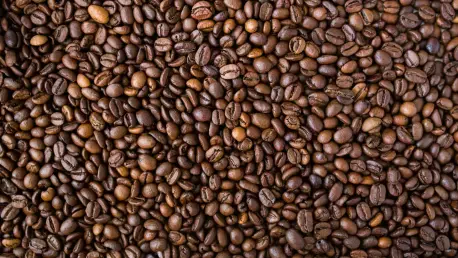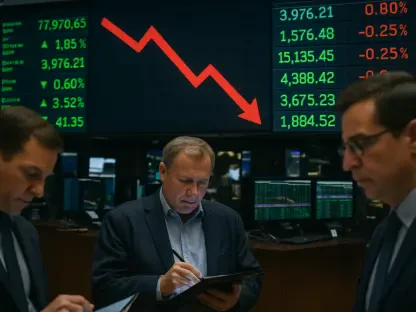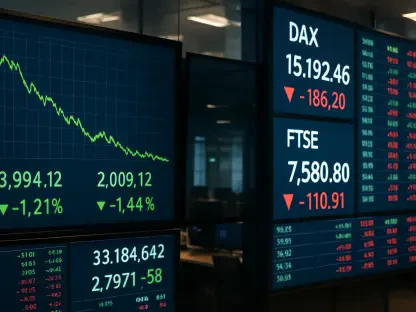What happens when a single policy tweak changes the taste of your daily coffee and the fortunes of entire economies? Picture a bustling cafe in Seattle, where baristas craft lattes with beans that no longer come from Brazil, the global coffee titan, due to a recent tariff overhaul by the Trump administration that has slashed duties on most coffee imports to the United States while maintaining a punishing 40% tariff on Brazilian beans. This decision has ignited a trade storm, reshaping supply chains and stirring debate across continents.
This shift isn’t just a footnote in trade policy; it’s a seismic event for an industry that fuels billions in revenue and supports millions of livelihoods. Coffee, as the second-most traded commodity after oil, holds immense economic weight, particularly for the U.S., the world’s largest importer. The stakes are high, with U.S. roasters poised to gain from lower costs and Brazilian farmers facing a steep decline in market share. This story delves into the heart of a brewing battle, exploring who wins, who loses, and what it means for the future of your morning cup.
A Brewing Trade War: Why Coffee Tariffs Are Critical
Coffee isn’t merely a beverage; it’s a global economic engine, and tariffs are the gears that can grind it to a halt or speed it forward. The Trump administration’s latest policy eliminates tariffs on coffee beans from most producing nations in Asia and Latin America, previously burdened by duties of 10% or more. Yet, Brazil, which historically supplies a third of U.S. coffee imports, remains saddled with a 40% tariff, creating a stark imbalance in the market.
This disparity has sent shockwaves through the supply chain. For U.S. roasters, the removal of tariffs from other regions offers a chance to source cheaper beans and diversify blends. Meanwhile, Brazil’s coffee sector, already under pressure from competitors, faces an uphill battle to maintain its foothold in the American market. The policy underscores how trade decisions ripple beyond borders, affecting everything from farm incomes in South America to retail prices in U.S. coffee shops.
The Roots of the Policy: Coffee Tariffs and Global Dynamics
To grasp the full impact, a look at the broader context of coffee trade is essential. The U.S. imports over $6 billion worth of coffee annually, making it a linchpin of international agriculture markets. Tariffs have long been a tool to balance domestic interests with global trade relationships, often influencing which countries dominate supply chains. The decision to lift tariffs on most imports while targeting Brazil with a hefty duty reflects a strategic pivot amid fluctuating commodity prices and domestic demands for cost relief.
Brazil’s role as the world’s largest coffee producer makes this policy particularly striking. Supplying high-quality Arabica and specialty beans, the country has been a cornerstone of U.S. coffee culture for decades. However, with competitors like Colombia and Vietnam gaining ground, the tariff structure amplifies existing challenges, potentially sidelining a key player in the global market. This backdrop sets the stage for a dramatic reshaping of trade flows over the coming years.
Winners and Losers: Dissecting the Tariff Impact
The effects of this tariff shift create a clear divide in the coffee industry. U.S. roasters and importers stand to benefit significantly from reduced costs on beans sourced from tariff-free regions. Industry analysts estimate that trade flows could shift by as much as 20% toward countries like Honduras or Vietnam within the next two years, from 2025 to 2027, as companies seek to optimize expenses. This flexibility allows for innovation in blends and potentially lower prices for consumers.
On the other side of the equation, Brazil faces a bitter reality. With a 40% tariff still in place, its coffee exports to the U.S. have already seen a sharp decline, including a reported 55% drop in specialty coffee shipments over recent months. This loss of market share not only hurts exporters but also impacts small-scale farmers who rely on American demand. As existing stocks of Brazilian beans dwindle in U.S. warehouses, importers are forced to pivot, further eroding Brazil’s dominance.
Industry Reactions: Voices from the Front Lines
Stakeholders on both sides of the Atlantic have weighed in with a mix of optimism and frustration. Judith Ganes, a prominent consultant at J. Ganes Consulting, points out that the tariff relief for most regions provides a much-needed buffer for U.S. roasters struggling with volatile prices. A California-based importer echoes this sentiment, noting that while access to diverse sources is a win, the high duty on Brazilian coffee continues to limit options for premium blends that rely on those beans.
From Brazil, the outlook is far grimmer. Marcos Matos of Cecafe, the Brazilian coffee exporters association, describes the policy as a deliberate distortion that undermines fair competition. Luiz Saldanha of the Brazilian Specialty Coffee Association warns of deepening losses, with U.S. buyers increasingly turning to alternative origins. Rabobank, a global agricultural analysis firm, adds that excluding Brazil from tariff relief hampers the policy’s potential to fully ease U.S. supply chain pressures, painting a complex picture of partial gains and significant setbacks.
Adapting to Change: Strategies for Survival
Navigating this new tariff landscape demands strategic action from all involved. For U.S. roasters, the priority lies in forging ties with producers in tariff-free zones, such as Vietnam or Guatemala, to secure cost-effective supplies. Experimenting with new flavor profiles by blending beans from different regions could also turn a challenge into a marketing opportunity, appealing to adventurous coffee drinkers. Staying informed through trade data and market forecasts will be crucial to anticipate further policy or price shifts.
Brazilian exporters, meanwhile, must explore dual paths to mitigate damage. Lobbying for a reconsideration of the tariff with U.S. trade officials remains a key focus, alongside efforts to expand into alternative markets like Europe or Asia. Diversifying customer bases could offset losses in the U.S., though building those relationships takes time and investment. For both sides, agility and foresight are the tools needed to weather a trade environment reshaped by policy whims.
Reflecting on a Policy’s Aftermath
Looking back, the tariff overhaul by the Trump administration stirred a profound shift in the coffee trade, favoring U.S. roasters with cost savings while delivering a harsh blow to Brazil’s exporters. The redirection of sourcing away from Brazilian beans marked a turning point, with competitors stepping into the gap left by declining shipments. This episode highlighted the fragility of global supply chains when subjected to targeted trade barriers.
As the dust settled, the path forward demanded collaboration and innovation. Industry leaders on both sides needed to advocate for balanced policies that supported fair competition without sidelining major players. U.S. roasters had to continue exploring diverse origins to maintain quality and affordability, while Brazilian stakeholders sought new markets to rebuild stability. The saga of coffee tariffs served as a reminder that every policy decision carried weight, urging vigilance and adaptability in an interconnected world.









